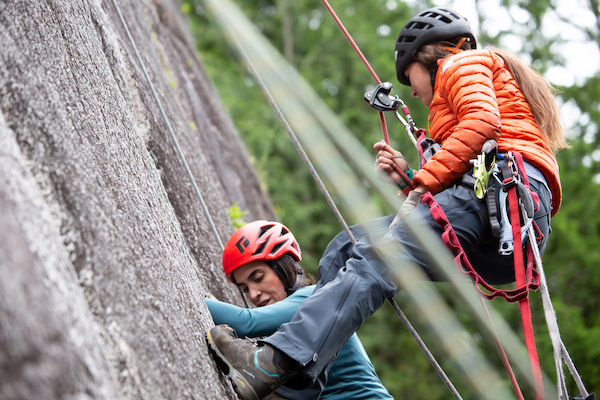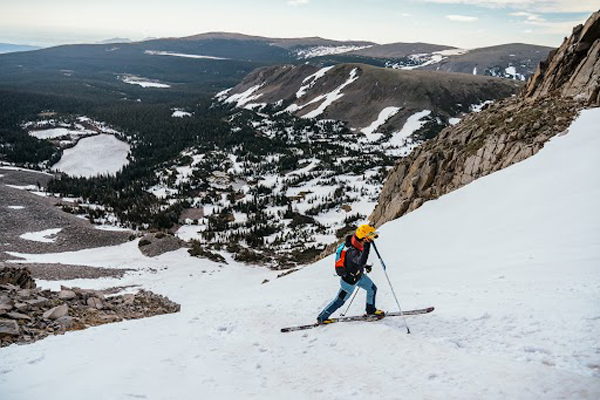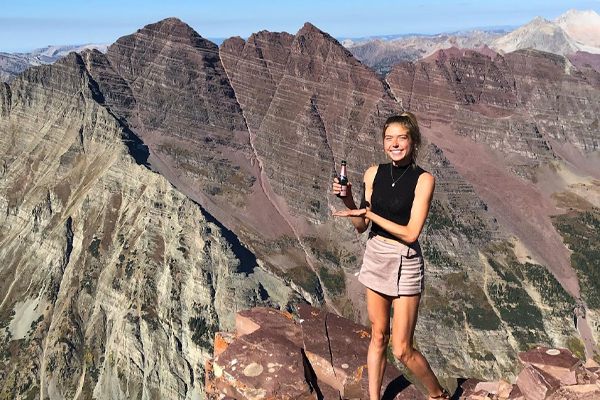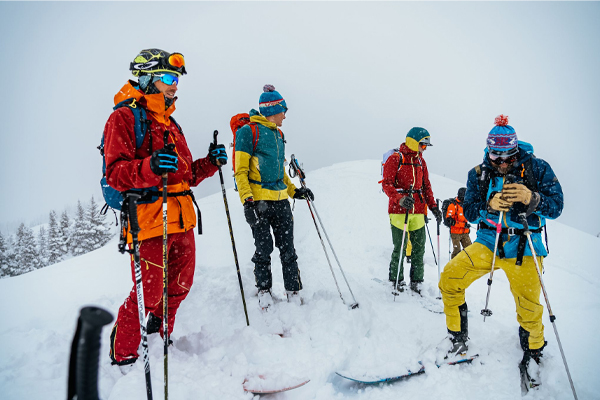Q&A - Anna Pfaff & Steve House on Training

Alpinism demands training a wide range of skills: rock climbing, ice climbing and above all—endurance...
- - -
For the last two-and-a-half years, alpinist Anna Pfaff has trusted Steve House and the team at Uphill Athlete with her training. In addition to maintaining a steady fitness base using UA training between expeditions, Pfaff and House work together to ratchet up the intensity to prepare her for big mountain objectives. With two objectives in Pakistan in mind for the summer—“The Eternal Flame” on The Nameless Tower (pictured above) and “The American Route” on the Great Trango Tower—Pfaff set to work on another training cycle with House directly following her return from a trip to Norway this past February. We spoke with both Pfaff and House to get an inside look at what her training looks like, and how Uphill Athlete builds athlete-specific training plans:
What prompted you to start working on Anna’s training together?
AP: Personally, I do really well with structured training. I like having a program and knowing exactly what to do each day. Having followed other programs that focused solely on technical climbing or a cross-fit style program, I never found a coach who knew exactly what the demands of alpine climbing are in the way Steve does. When I heard he was doing personal training, I contacted him right away to prepare for a previous Himalayan expedition. He knows what it takes and how to train for it because he does it!
SH: Anna and I knew one another through climbing, but never roped up together except in the climbing gym. She had read Training for the New Alpinism, and when Scott and I introduced coaching she was an early adopter. Anna is smart, disciplined, and motivated—three attributes make her a real pleasure to coach.
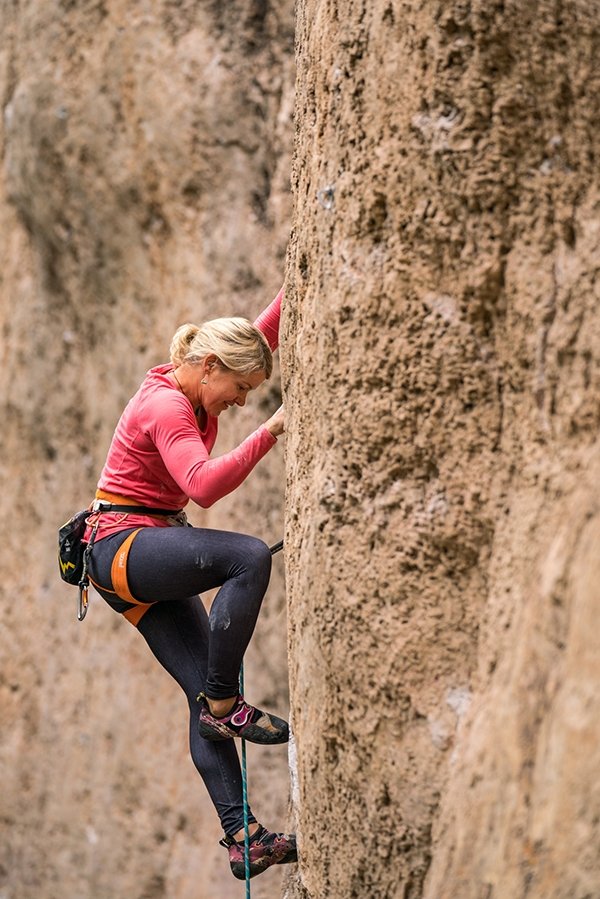
Steve, how did you use your experience as an alpinist to help develop a training plan to help Anna succeed in the mountains? What were the most important aspects of Anna’s program?
SH: I’ve been climbing for 30 years now. I’ve done 12 expeditions to Pakistan, eight to Nepal, four to Tibet, and three to India. So I have really lived Himalayan expedition climbing. I also worked with Scott Johnston as my own coach for a nine-and-a-half-year period, and I’ve now been coaching for nearly four years—I’ve been on both sides: athlete and coach. This gives me a really good understanding not only of how to train, but what drives a climber like Anna. How to motivate her (which is rarely needed in Anna’s case), when to hold the reins a bit tighter when she gets carried away and wants to do more, more, more. I get it. I think I understand the psychology of a climber who wants to work as hard as Anna works, because I’m the same way. I was never talented as a climber. But I know commitment and a strong/smart work ethic can take anyone a very long ways.
Her fitness sits on a good aerobic base, developed through running. Think of this as the foundation of her fitness-house. She’s often in Yosemite where there is ample access to big vertical relief, which makes it nice. Then we layer on climbing specific training which varies based on the season and the cycle in the training. Then we layer on gym-based muscular endurance work to give her a really high overall work capacity. The order and timing of the different workouts is crucial. Anna’s been training with me for almost three years now and her base fitness is now quite exceptional. Our next step is to make her faster, give her another gear.

Anna, what was the training like? Describe the hardest parts, or low points (if any) during your training cycle leading up to Pakistan.
AP: I am an alpine climber, a discipline that involves a broad skill set including rock climbing, ice climbing and most importantly—endurance. We started training specifically for Pakistan as soon as I returned from a Norway trip this past February. I had lost a lot of general fitness from travel during the winter so we went straight to work gaining it back.
Training is usually six days a week and—depending on where I am in the cycle—consists of running, strength and climbing. The length of training depends on the amount of time we have between expeditions. I enjoy training so I have not really experienced any low points. Some days I want to do more and I have to hold back because I know that will be harmful in the long run. In the past I had the mentality that more is better, which would leave me in a fatigued state. Steve has taught me it is more efficient to do quality workouts with sufficient recovery rather than quantity.
Training with Steve is really easy. I am in contact with him every few days via text message to check in on how workouts are going. We use a program called Training Peaks so all the workouts are laid out for the week. We make changes accordingly based on how I feel or what Steve thinks I should do. Also my schedule is crazy because I work as a nurse and travel frequently for climbing. He helps me make last minute changes which is really convenient.
Steve, what were the “nuts and bolts” of Anna's training; what did her workouts look like day in-day out?
SH: Anna’s workouts are either a) running, b) climbing, or c) gym-based. Of course, each of these has many permutations based on what is needed at that time within the context of the larger plan of her annual training and goals. Day to day looks like, well, it looks like training six days a week and resting one day. Anna’s remarkable in that she never misses a workout. In 2.5 years I think she’s missed two, and those were both because she’d done a 12-hour nursing shift at the ER in Oakland. She’s basically a training superwoman.
Does your training involve any other aspects—diet, recovery tactics, mental tactics, etc.
AP: Diet definitely plays a huge role in training. I limit carb intake to around 25% of my overall caloric intake.Fats and proteins make up the rest. After big training days we always do an aerobic recovery run and lots of stretching!
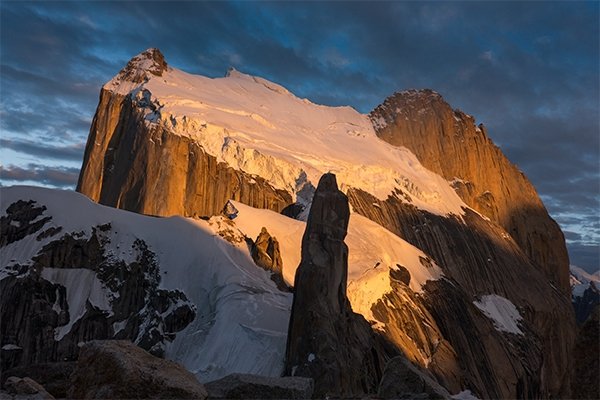
Anna, how did your training and preparation translate to performance in Pakistan? Was there a moment or a period of time in Pakistan where you were able to “relax” and feel like you were relying on a strong foundation? That, “AH HA!” moment?
AP: Myself, Andres Marin and David Allfrey climbed “The Eternal Flame” on The Nameless Tower and “The American Route” on the Great Trango Tower (above). The high altitude (6,000+ meters) and technical climbing make these routes more strenuous than say other objectives like Fitz Roy and El Capitan. I have done quite a bit of climbing at altitude and it always takes a toll. We had to be quite fit in order to achieve these goals.
I think being a fitter person and having endurance gives me confidence for big objectives. The approach and carrying heavy packs would have drained me physically me if I did not have the solid base foundation that Steve and I have been working on for the past few years. I think some athletes naturally have a high level of fitness and some have to train—I have to train!
Founders Steve House and Scott Johnston developed Uphill Athlete, after co-writing to training books for, as a platform for openly sharing proven training knowledge for the sports of alpinism, mountaineering, rock and ice climbing, ski mountaineering, skimo racing, and mountain running. Uphill Athlete offers free educational resources, sells well-designed training plans, and coaches amateurs and experienced athletes to maximize their fitness and success in the mountain sports they love. Learn more about Uphill Athlete at uphillathlete.com/.
Preview & Photo 3 : ©Anna Pfaff
Photos 1 & 2: Savannah Cummins





